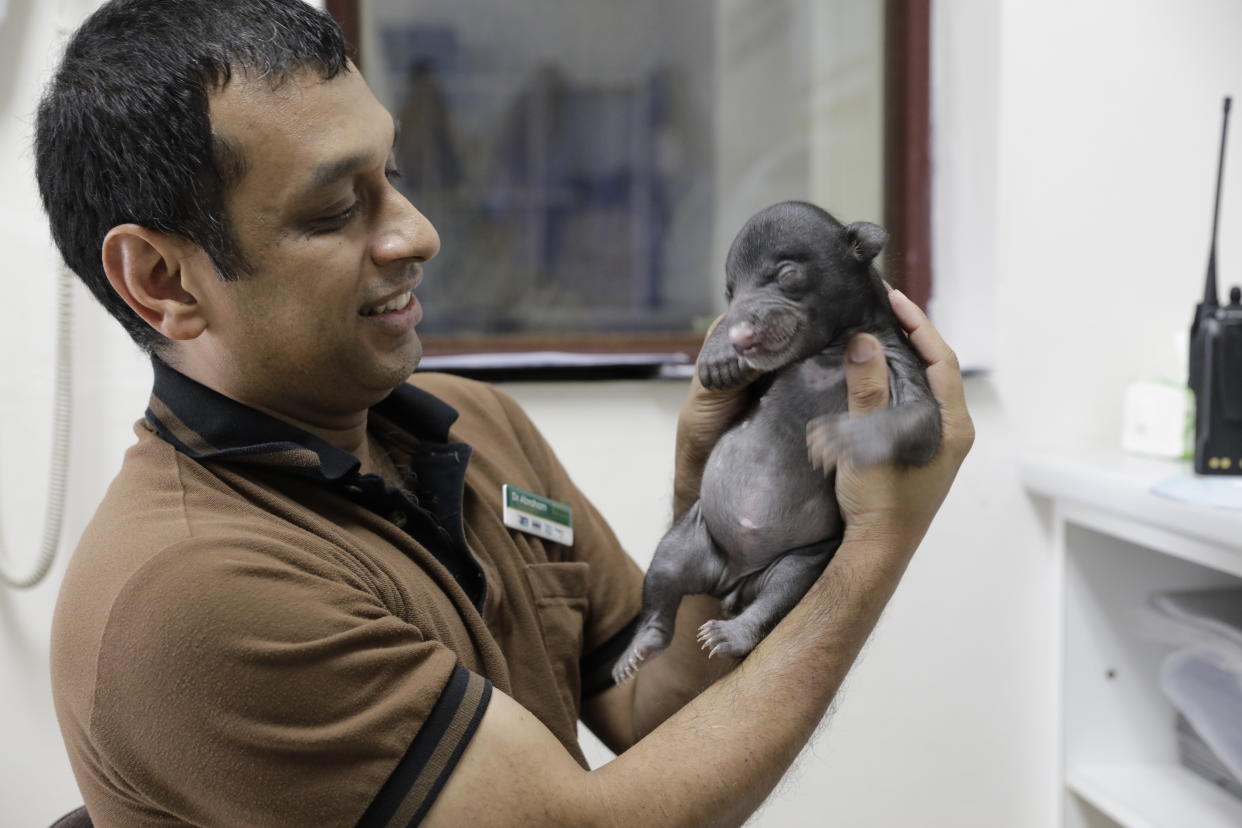Over 700 newborns from more than 100 species welcomed by Wildlife Reserves Singapore parks in 2018

Over 700 newborns from more than 100 species were welcomed last year at the Wildlife Reserves Singapore (WRS)’s parks — Jurong Bird Park, Night Safari, River Safari, and Singapore Zoo.
Of these, 35 out of 131 species are listed under the International Union for Conservation of Nature Red List of Threatened Species, said the WRS in a press release on Friday (22 February).
They include a pair of twin sloth bears, Santa Cruz ground-doves, Malayan horned frogs and a Celebes crested macaque.
“Our team of zookeepers and veterinarians have done us proud again with some outstanding achievements in conservation breeding,” said WRS deputy CEO and chief life sciences officer Dr Cheng Wen-Haur.
“The world-first breeding of Santa Cruz ground-dove in human care is a significant step in establishing an assurance population of this species away from their natural home. Successful breeding of Malayan horned frog adds to our knowledge of caring for this hard to breed species.”
The Jurong Bird Park saw its first Santa Cruz ground-dove chick hatch on 31 December last year, said the WRS.
“There have been 12 hatchlings since then and more eggs being incubated, a significant win for a species likely with a wild population of barely over 300. Jurong Bird Park currently houses the only assurance colony for this endangered species outside its native Solomon Islands,” it added.
The bird park also welcomed three more straw-headed bulbul last year. According to the WRS, the park is the first in over a decade to breed the critically endangered species under human care.
The species is believed to be extinct in half of its native range in Southeast Asia due to extensive poaching, with Singapore housing a local wild population of just over 200.
The year also marked the first time the tadpoles of the Malayan horned frog – a species described by WRS as “notoriously difficult to breed” – reached froglet stage in Singapore Zoo.
In March last year, the zoo also saw the birth of its 25th Celebes crested macaque baby, the first in seven years.
“The goals of breeding wildlife in our parks are to achieve sustainable populations of species in human care,” said Dr Cheng. “The ultimate goal would be to return some of these zoo-born progenies to their wild habitats someday when it is safe to do so.”
More Singapore stories:
51 per cent spike in PAB, PMD fire cases last year: SCDF
Man jailed for conning 4 women he befriended over Tinder of $33,500
SAF appoints BG Tan Chee Wee as first Inspector General to oversee training safety
Merlion statue to undergo first restorative works since 2015



